目录
1.1.2 Identifying the Relevant Literature
1.1.6 Theoretical Development in YourArticle
1.1.7 Creating Your Discussion and Conclusions
1.2 The Reviewing and Revision Process
2.1 Systematic literature review process
2.2 Research methodology guideline.
1 系统的讲述
Webster J, Watson R T. Analyzing the past to prepare for the future: Writing a literature review[J]. MIS quarterly, 2002.
1.1 Writing a Review Article
we indicate the broad structure of a review paper and provide several suggestions on executing your review.
In contrast,to hook your reader early,the introduction to your paper needs to motivate your topic,provide a working definition of your key variable(s), and clearly articulate the paper's contributions.. Ways of demonstrating contributions include providing a new theoretical understanding that helps to explain previously confusing results,noting that little research has addressed this topic, providing calls from well-respected academics to examine this topic,bringing together previously-disparate streams of work to help shed light on a phenomenon,and suggesting important implications for practice.
The next section of your paper should provide more elaborate definitions of your key variables and set the boundaries on your work.
1.1.2 Identifying the Relevant Literature
A high-qualityreviewis complete and focuses on concepts. A complete reviewcovers relevant literature on the topic and is not confined to one research methodology,one set of journals,or one geographic region.
We recommend a structured approach to determine the source material for the review:
- The major contributions are likely to be in the leading journals.It makes sense, therefore,to start with them.
- Go backward by reviewing the citations for the articles identified in step 1 to determine prior articles you should consider.
- Go forward by using the Web of Science (the electronic version of the Social Sciences Citation Index) to identify articles citing the key articles identified in the previous steps. Determine which of these articles should be included in the review.
A systematic search should ensure that you accumulate a relatively complete census of relevant literature.
You can gauge that your reviewis nearing completion when you are notfinding new concepts in your articleset. Of course, you will miss some articles.If these are critical to the review,however,they are likely to be identified by colleagues who read your paper either prior to or after your submission.
1.1.3 Structuring the Review
A literature review is concept-centric.Thus,concepts determine the organizing framework of a review. In contrast,some authors take an author-centric approach and essentially present a summary of the relevant articles.This method fails to synthesize the literature..The two approaches are easily recognized, as illustrated inTable 1.
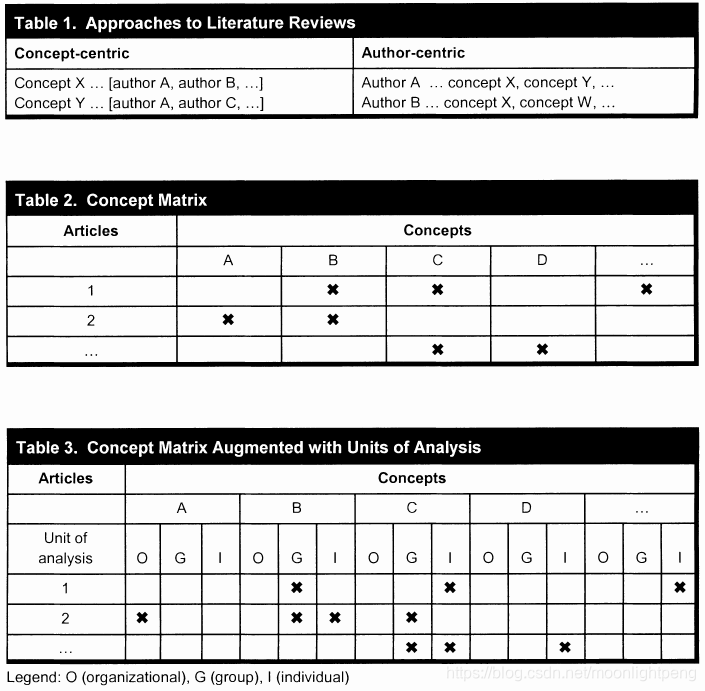
To make the transition from author-to concept-centric,we recommend that you compile a concept matrix as you read each article(Table2 and Table 3).
Tables and figures can be an effective means of communicating major findings and insights.Nonetheless, tables cannot be merely lists of articles.They need to add value by categorizing articles based on a scheme that helps to define the topic area, such as types of variables examined,level of analysis, gaps in the literature, or other important theoretical issues.
A review succeeds when it helps other scholars to make sense of the accumulated knowledge on a topic. We believe that sense-making is enhanced when a reviewis logically structured around the topic's central ideas and makes good use of tables and figures to convey economically the key findings and relationship.
1.1.4 Tone
A successful literature review constructively informs the reader about whath as been learned.In contrast to specific and critical reviews of individual papers, tell the reader what patterns you are seeing in the literature.Do not fallin to the trap of being overly critical.

1.1.5 Tense

1.1.6 Theoretical Development in YourArticle
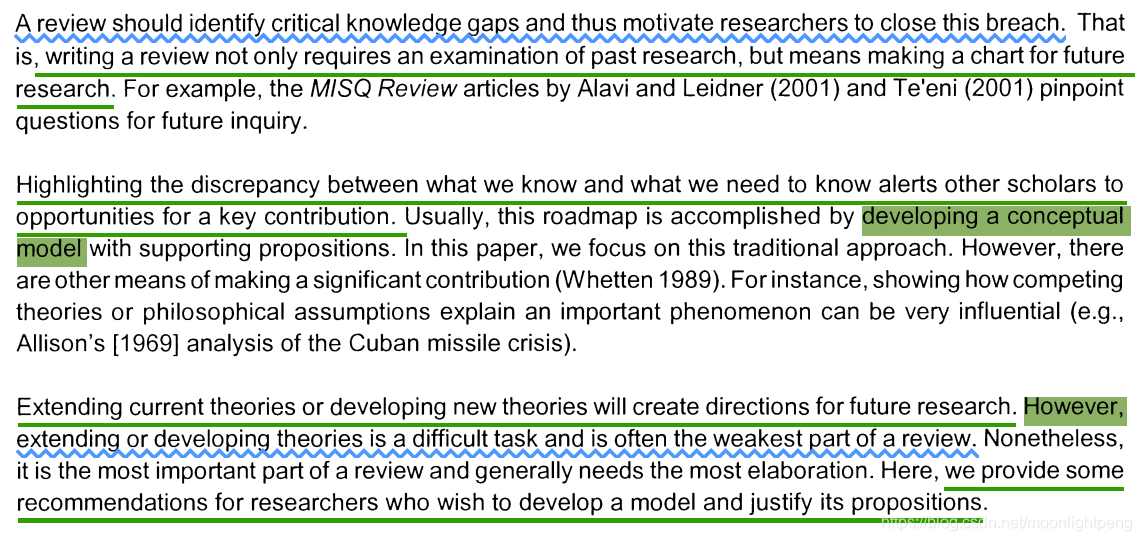
1.1.7 Creating Your Discussion and Conclusions

1.2 The Reviewing and Revision Process
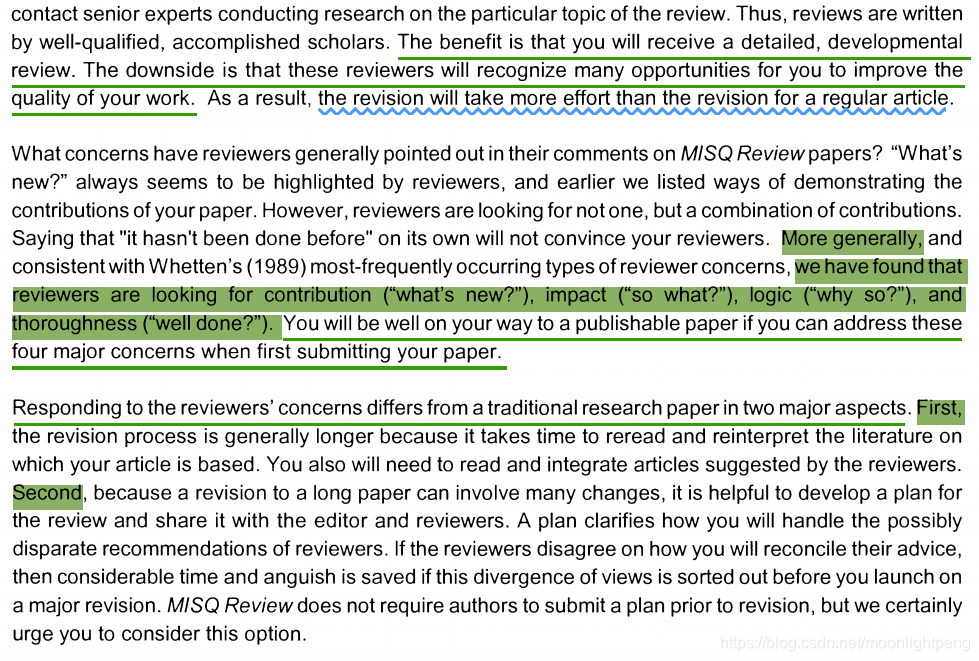
1.3 Summary

2 相关方法
2.1 Systematic literature review process
Brereton P , Kitchenham B A , Budgen D , et al. Lessons from applying the systematic literature review process within the software engineering domain[J]. Journal of Systems and Software, 2007, 80(4):571-583.
B. Kitchenham and S. Charters. Guidelines for performing systematic literature reviews in software engineering. 2007.
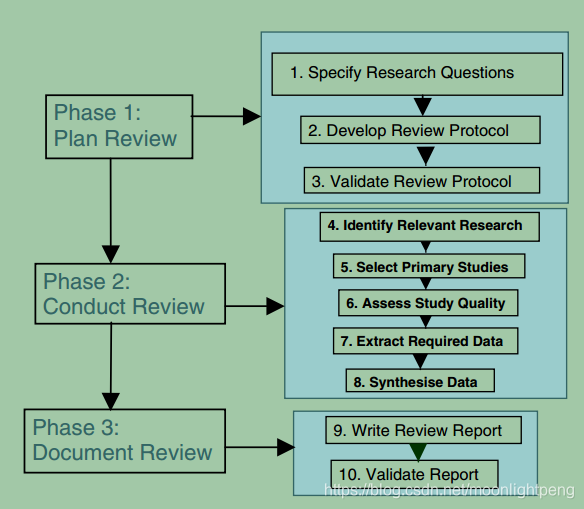
2.2 Research methodology guideline.
Mutlag A A, Ghani M K A, Arunkumar N, et al. Enabling technologies for fog computing in healthcare IoT systems[J]. Future Generation Computer Systems, 2019, 90: 62-78.
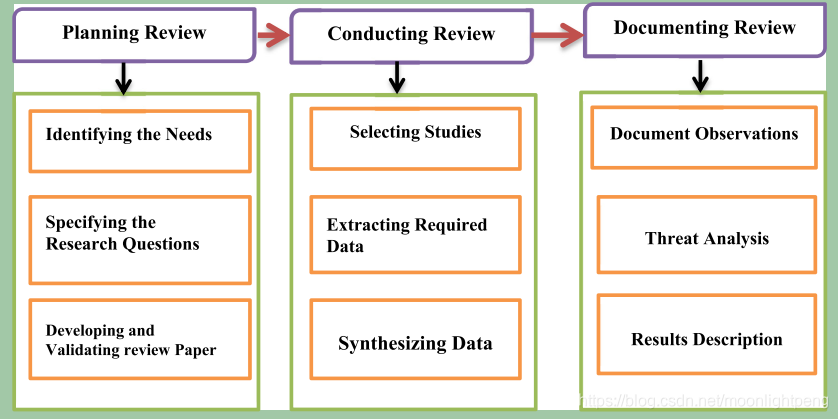





 博客系统讲述了撰写文献综述的方法,包括文章结构、确定相关文献、组织框架、语气、时态等方面,还介绍了系统的文献综述流程和研究方法指南,为撰写高质量文献综述提供了全面的指导。
博客系统讲述了撰写文献综述的方法,包括文章结构、确定相关文献、组织框架、语气、时态等方面,还介绍了系统的文献综述流程和研究方法指南,为撰写高质量文献综述提供了全面的指导。
















 3198
3198

 被折叠的 条评论
为什么被折叠?
被折叠的 条评论
为什么被折叠?








